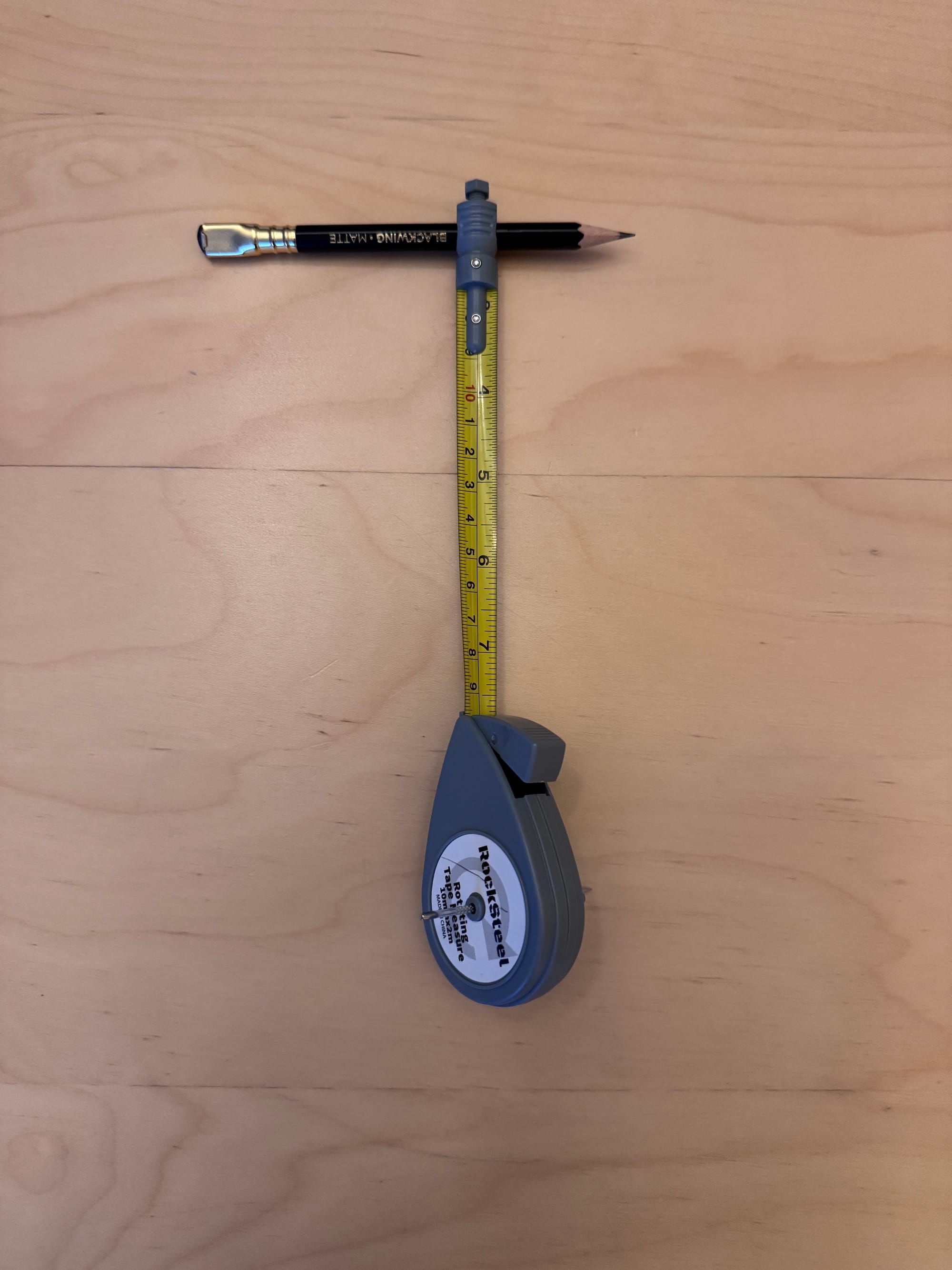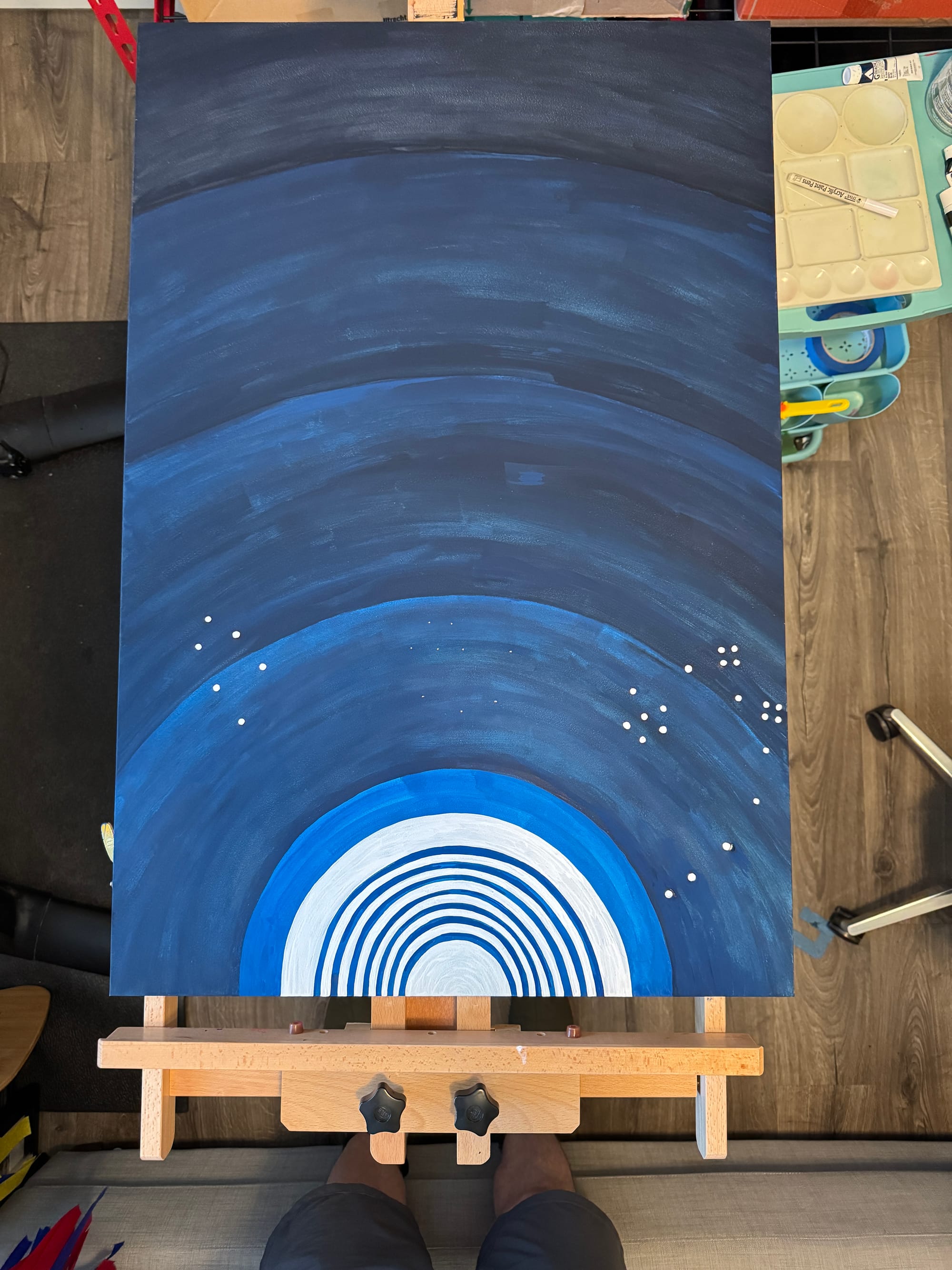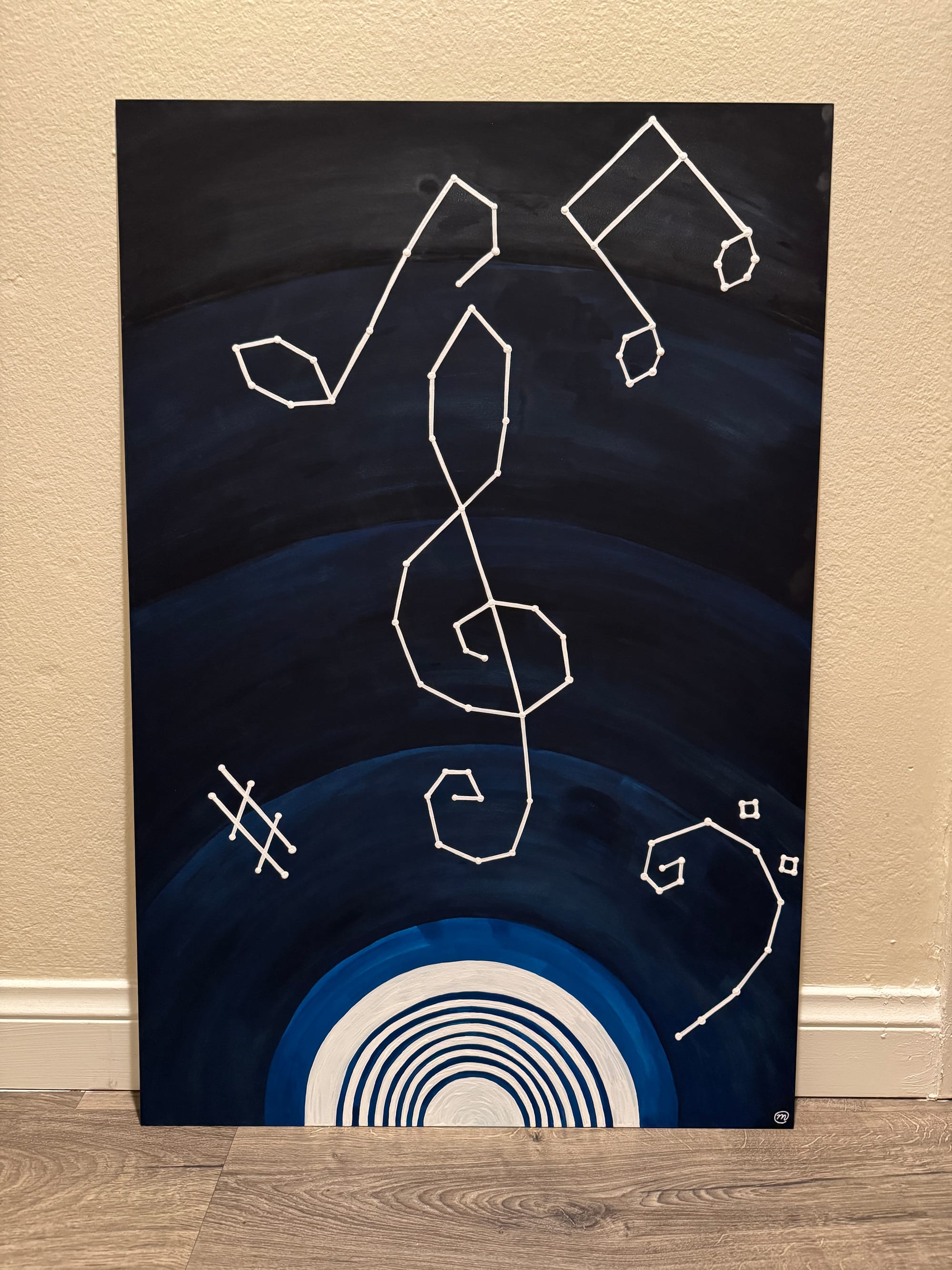
Have you ever experienced a concert at “The Hollywood Bowl”? We’re blessed to have seen many shows there: from The Roots to Stevie Wonder — the venue definitely attracts top-tier talent. But to me, the real magic happens out in the open air … LA is one of those places where you can hold outdoor events (pretty much) year-round, and it’s kind of hard to put a finger on it — but there’s just … something … about that bandshell under the stars … I wanted to capture a unique relationship: the one taking place in real-time between the musicians & the crowd & the heavenly bodies — there’s a different kind of energy brewing, & it takes all three groups to build a brand new celestial body — one that exists only for fleeting moments — and then dissipates into the night sky ...
To order a high-resolution print of this piece (shipped directly to you), please visit the shop:
Why is this series called "The City Of Angles"?
I moved down to Los Angeles in 2009, and after sixteen years (!) of living in this sprawling mecca of diversity, art, entertainment, cuisine, music and culture — I finally feel like I have some perspective on one of the greatest cities on earth. After getting laid-off from my software job at the time, I decided to take on a little mini-series of paintings in honor of some of my favorite things about Los Angeles and some distinct memories I've had here — and I call it The City of Angles (see what I did there? 😉) I think that title works on multiple levels; people come to L.A. not just for the warm weather, hiking and theme parks — but lest we forget, Los Angeles is a city of dreamers ... a city of builders ... a city of artists ... a city of doers ... Heck, you might even say that everyone here ... has an angle? 📐
So my angle with this series was to return to simplicity. After all, if you asked some luminaries what they thought of simplicity?
“Simplicity is the ultimate sophistication.” — Leonardo da Vinci
or perhaps
“Simple can be harder than complex: you have to work hard to get your thinking clean to make it simple.” — Steve Jobs
So what did that mean for my paintings? Some questions I had to ask myself:
- How can I do "more with less"?
- How can I restrict the number of colors that I use in my palette?
- How can I simplify compositions to the point where shapes and lines and elements are balanced and interesting enough to "do the talking" (instead of filling the composition with needless complexity)?
- How can I leverage "negative space"?
- How can I "suggest" things in a painting (instead of just spelling it out)?
So that's where the name of the series comes from; I hope you enjoy the pieces!
Process
I knew that I wanted to do something with the iconic Hollywood Bowl bandshell, and of course — music — but early on, I wasn’t thinking of this in “celestial” terms. In early sketches (sorry I didn’t preserve them) I explored different angles of this story — the many stairs, the “picnic experience”, etc — but ultimately I decided to put the bandshell at the bottom of the piece, and focus on the sky above it …
I initially thought of musical notes floating up into air, but then thought … well wait a second — what if the stars … were musical notes themselves?

It was then I crystalized the concept, and knew that I wanted to make this a rather “dark” piece (which would be a nice contrast to the brighter shades of the other pieces in the series).
I thought about the round bandshell, and realized I could simplify the design into (more or less) white stripes that arc out …
Then I thought ... You know what else emanates in waves? Sound waves …
And I thought, why not continue this “arc” design motif from the bandshell into the cosmos (as if some sonic transmission was being sent into the universe)?
So I needed a special tool to execute the large curves …

Why use a compass tool to sketch the arcs?
After being sold on the “sonic wave” idea (that stretches out into space), I set out to explore how I could make it a reality on the 24 by 36 inch board … That may not sound very large, but as it turns out — it’s too large of a surface to use a pre-made “stencil”, & I definitely wanted the arcs to be clean and proportional …
After doing some research, I settled on this “compass” tool that uses a “pin” in its center (or when commonly used by construction workers, you can center it on a nail). I was able to hold the pin on the bottom edge of the board, and then sketch out ever-larger concentric circles that were perfectly proportional to the last one … It worked!
After using the compass tool to rough in the arcs, I laid down some background paint starting with a lighter blue down at the bottom (where the lights of the bandshell would be brighter) and progressively went darker to (nearly) black up at the top (suggesting deeper night sky) …
The only problem was — while the compass tool was great for making large arcs — it wasn’t good for making small ones (it had a limited range when contracted) … So what is one to do?
You use what you have at your disposal!

I ended up testing a few objects lying around the house, and ultimately, lo and behold — I found the perfect object for the task … an exercise / stretching wheel (naturally)! This thing was sturdy, and also had a nice smooth internal edge to it. It worked!

After laying down some bold crisp white stripes in arcs to suggest the bandshell, it was time to start roughing in the cosmos …
I approximated the location of the ”stars” freehand, and I used a white acrylic paint pen to mark their general areas … Then I went over the top of that with the gouache to fill them into larger dots …
Then, I played a (high-stakes) game of “connect the dots”! I painted the connecting lines to the stars freehand, and it worked out just fine …

After putting the finishing touches on it & signing the piece — I took it over to the fine folks at POV.STUDIO to do a high-resolution scan of the final work.
